-
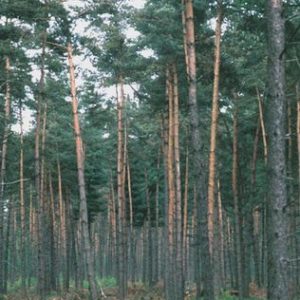
Scots Pine
Pinus sylvestris£5.00 – £20.00 inc. VATScots Pine is the only pine native to Britain and is easily recognised by its attractive reddish bark. It’s needles grow in pairs and are quite long when the tree is young and fast growing, but become shorter growing with age. It has a conical growth habit when young, making it popular for Bonsai production and increasingly for use as a Christmas tree. When mature the tree makes a wonderful architectural shape. Once extensively covering land in Scotland, there are now only a few remaining ancient Caledonian Forests due to the iconic Scots Pine being used as a timber tree. Conservation bodies and landowners are trying to rectify this. (Trees for Life)
Not for forestry purposes.
-

Siberian Pea Tree Seed
Caragana arborescens£5.00 inc. VATSiberian Pea tree/Caragana arborescens can grow into a small tree but is more often a shrub. It thrives in any conditions especially in exposed dry situations. The small, pea-like, scented yellow flowers develop into long narrow seed pods. It is a legume and so fixes nitrogen into the soil and can be used to enrich poor soils. The small seeds can be eaten, when cooked, and were used by immigrants to the US whilst they travelled. It is now thought of as an invasive species in America!
-
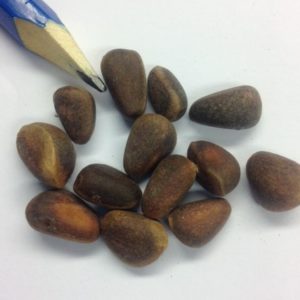
Siberian Pine Seed
£8.50 inc. VATThe Siberian Pine is related to Pinus cembra. It is extremely hardy, slow growing and long-lived, particularly suited to cold climates where it is often grown as a specimen tree. The needles grow in bundles of five. This is one of the Pines which have shown resistance to White Pine Blister Rust. and so is being used in breeding programmes. The cones produced are quite bulky and heavy, the seeds inside are eaten as a good source of oil, sold in Russia as Cedar Nuts. It is quite rare in its native habitat.
-
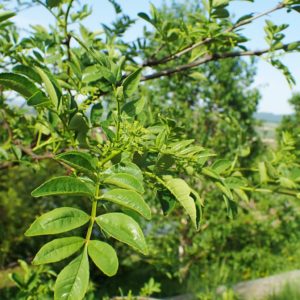
Sichuan Pepper Seed
Zanthoxylum simulans£5.00 inc. VATSichuan Pepper or Chinese Prickly Ash grows into a wide-spreading, deciduous shrub with pinnate leaves similar to Ash. Its branches are slightly hanging and are covered in large, flat spines. Bunches of tiny yellow green flowers appear in May and June, followed by warty reddish fruit. Autumn colour is red and yellow All parts are aromatic and the ground up fruit is a more pungent pepper than Black pepper and a constituent of Chinese ‘Five Spice’. Used against various maladies in oriental medicine.
-
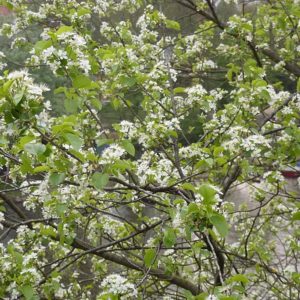
St Lucie Cherry Seed
Prunus mahaleb£5.00 inc. VATThe Mahaleb or St Lucie Cherry is a small deciduous tree covered in fragrant white flowers in spring followed by dark coloured fruit in early summer. The seed inside the hard cherry stone has the flavour of bitter almonds and has medicinal qualities apparently. The wood has an outstanding grain which is used for pipes and walking sticks. Records of the tree date back as far as 900 AD in the middle east.
-
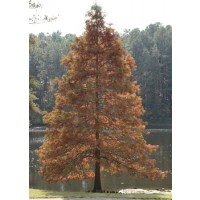
Swamp Cypress Seed
Taxodium distichum£5.00 – £9.50 inc. VATThe Swamp Cypress is an ideal conifer for wet soils. It is the dominant tree in the everglades of Florida and introduced to the UK in the mid 1600s. In the autumn, the soft leaflets fade to a beautiful bronze and then brown in autumn before dropping – a rare deciduous conifer. This tree is easy to confuse with Metasequoia(Dawn Redwood), but Taxodium has branches and leaflets arranged alternately, whereas Metasequoia has them arranged in pairs, opposite each other. The bark is stringy and shaggy and mature trees in wet areas grow ‘knees’ or odd bits of trunk erupting from the ground round the main trunk (pneumatophores). Despite its name, it doesn’t necessarily need to be planted in a wet place.
-
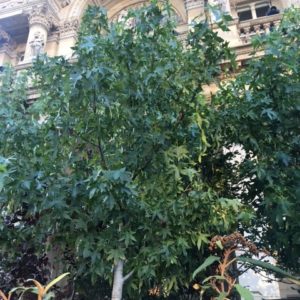
Sweet Gum Seed
Liquidambar styraciflua£5.00 – £10.00 inc. VATSweet Gum is a large deciduous tree which has shining green, leathery, maple like leaves. They turn a fantastic orange, red and purple in autumn. Young shoots have distinctive corky ridges and the sap is fragrant. Although it rarely flowers in this country, the flower heads look similar to those of Rhus and the resulting seed heads look like Plane tree seed balls; it is actually related to Witch Hazels! A fine specimen or woodland tree.
-
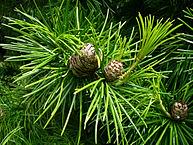
Umbrella Pine
Sciadopitys verticillata£2.50 – £9.50 inc. VATA curious conifer native to upland areas of two of the large Japanese islands. The needles are made up of two fused leaves and appear upside-down in that their shiny surface faces downwards.
-
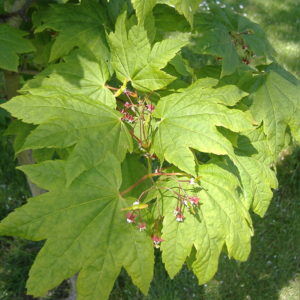
Vine Maple Seed
Acer circinatum£6.00 – £25.00 inc. VATVine Maple is a fine, medium sized deciduous tree with elegant and graceful habit. It can also be grown as a large, multi-stemmed shrub. The small, lime green flowers in tassels in spring are followed by red, winged, sycamore -like seeds. The fresh green leaves are rounded but lobed and turn fantastically bright in autumn – reds, oranges and yellows. It is perfect species for bonsai.
-
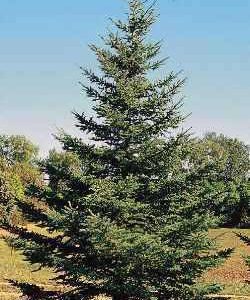
White Spruce Seed
Picea glauca£5.00 – £19.50 inc. VATWhite Spruce is a very hardy species and quite variable. Stubby needles are densely packed and on some trees are green and some blueish grey and anything in between. It has a narrowly conical growth habit when mature, with branches that ascend at the tip. In Canada it is an important timber tree for building and pulp and in Japan the wood is used for making boards for the game ‘Go’
pic courtesy of USDA-NRCS PLANTS Database / Herman, D.E. et al. 1996. North Dakota tree handbook. USDA NRCS ND State Soil Conservation Committee; NDSU Extension and Western Area Power Admin., Bismarck, ND., Public domain, via Wikimedia Commons
-
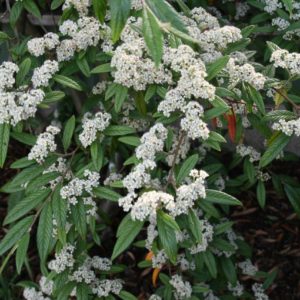
Willowleaf Cotoneaster Seed
Cotoneaster salicifolius£5.00 inc. VATWillowleaf Cotoneaster/Cotoneaster salicifolius makes a tall evergreen shrub or small tree, often multi-stemmed. It bears very heavy crops of spherical red shiny fruits in autumn, formed from white flowers in early summer. The glossy leaves are long and thin. This Cotoneaster is very useful as a screening plant and can be pruned into shape if necessary. It tolerates being planted in coastal areas, but can suffer leaf burn in very cold winds.


Sign up to receive great news and offers